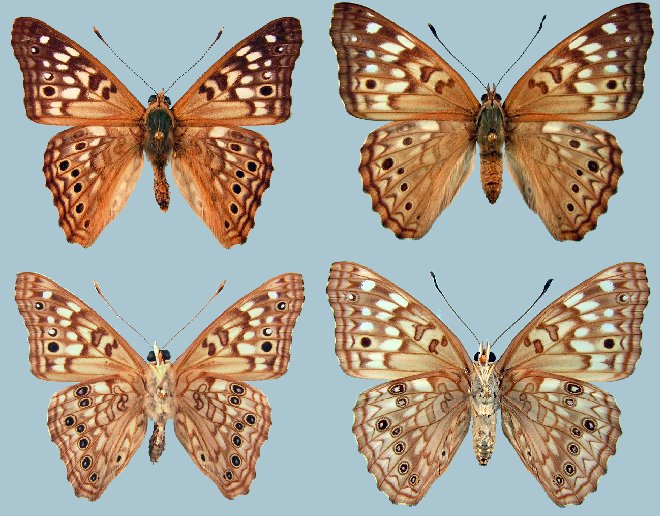Asterocampa celtis celtis

Photo Life History: Asterocampa celtis celtis
Habitat: Forest Edges; Valley Lakes & Rivers
Host Plants: Celtis occidentalis
Suitable Lab Host Plants: Celtis reticulata; Many species of Celtis work well in the lab.
How to Find Female Butterflies: Click here.
Caring for Live Female Butterflies: Nectaring techniques
Methods of Female Oviposition: Open Screen Cages. (Watch this video that shows how females of A. celtis celtis were set up for eggs. Make sure you provide females with new growth hackberry leaves.)
How to Find Eggs: Look on Host Plants with New Growth.
How to Hatch Eggs: Consolidate eggs into one container.
How to Find Caterpillars in the Field: Look on Host Plants with New Growth; Look for Isolated host plants; Look for Gregarious Caterpillar Nests
How to Find Pupae in the Field: Larvae will pupate on leaves; but camouflage themselves well.
Caterpillar setups: Open terrariums; Open Bucket; Potted Plant.
Larva to Pupa: Caterpillar silks to leaf or twig; creates and attaches cremaster; hanging before pupating.
Number of Broods per Year: 2-3
Overwintering Stage: Third instar
Overwintering Strategies: Your Own Backyard; Refrigerator Balance humidity with airflow or larvae will desiccate (insufficient humidity) or mold (insufficient airflow.)
Post-Hibernation Strategies: Provide post-diapause third instar larvae with healthy host plant; allowing them to resume feeding.
Avoiding Diapause Techniques: Expose larvae to 24 hours of light; Healthy Host Plant.
Disease Prevention: Change out host plant and remove frass every four to five days in an open bucket or open terrarium setup.
Emergence: Emergence Container
Field Notes: Steve Spomer notes that, because the butterfly can be so common in the midwest, it is not too difficult to locate larvae; especially in the fall.

